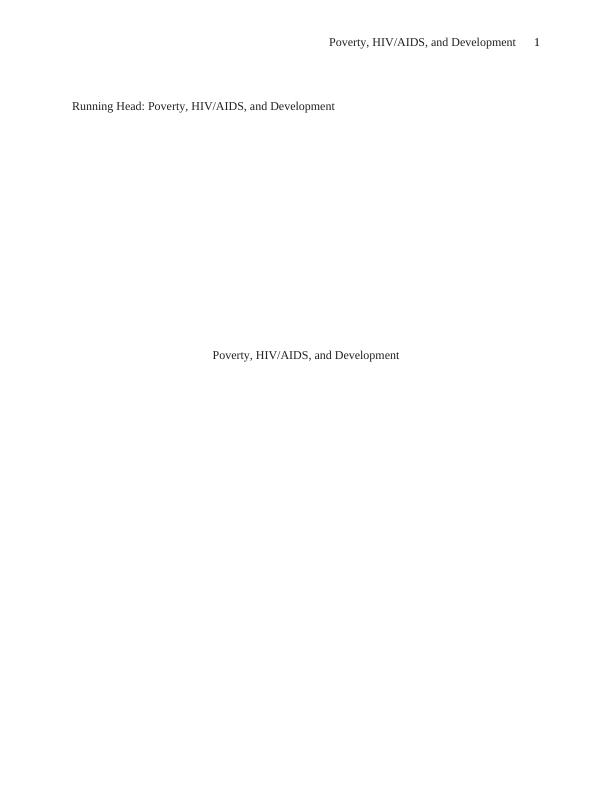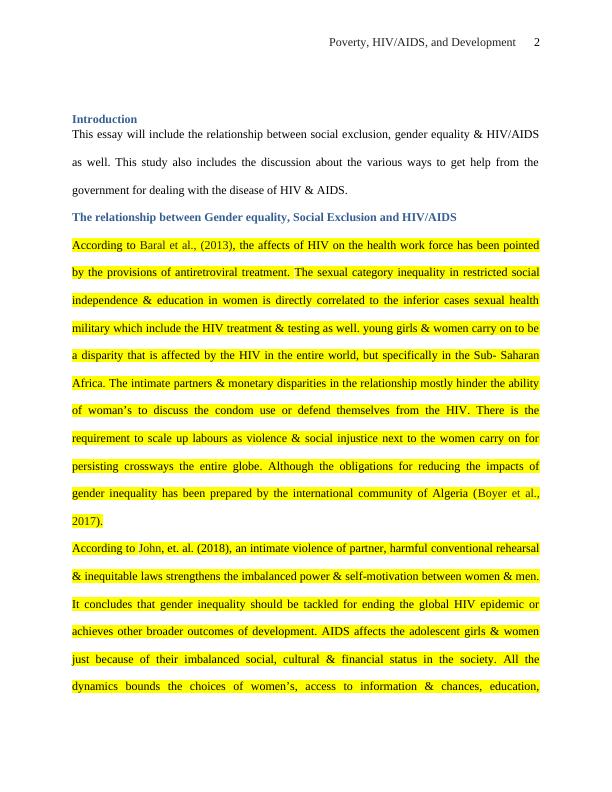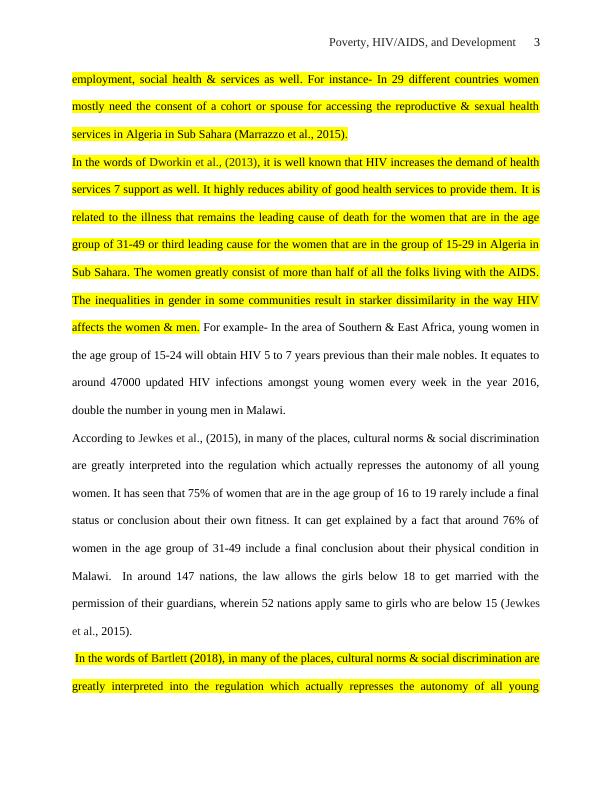Poverty, HIV/AIDS, and Development
Assume that you
7 Pages1872 Words328 Views
Added on 2023-06-03
About This Document
This essay discusses the relationship between social exclusion, gender equality, and HIV/AIDS. It also includes ways to get help from the government for dealing with the disease of HIV & AIDS. The impacts of HIV on the health work force, sexual category inequality, and the inferior cases of sexual health military are discussed.
Poverty, HIV/AIDS, and Development
Assume that you
Added on 2023-06-03
ShareRelated Documents
End of preview
Want to access all the pages? Upload your documents or become a member.
Factors Associated with Prevalence of Intimate Partner Violence Among Women in Central Uganda: A Study
|6
|1815
|101
Gender Sexuality and Society
|8
|3147
|69
Men’s Violence Against Women
|9
|2775
|57
Individual Essay on Social Determinant of Health
|8
|2462
|13
Gender Inequality and Violent Attitude of Men towards Women in Domestic Violence
|12
|2896
|28
The Impact of HIV on Women Assignment
|7
|1952
|208



